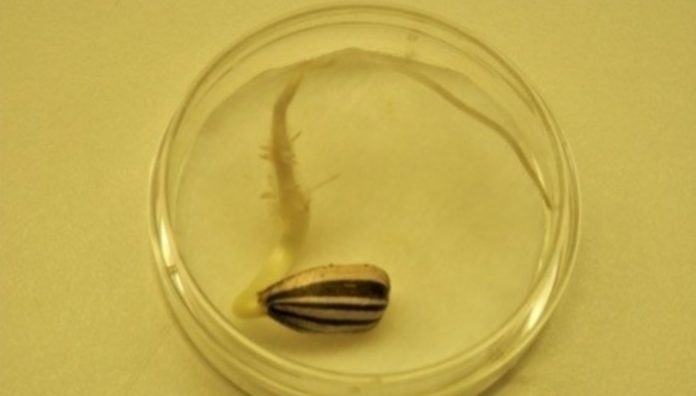The activity rates of all biological creatures, both plant and animal, are influenced by the gravitational tides produced by the orbital mechanics of the sun, Earth, and moon, says new study.
Observations of changes in autoluminescence generated by seed germination in cycles regulated by gravitational tides motivated researchers at the University of Campinas in Brazil to pursue research.
The gravitational tides produced by the orbital mechanics of the Sun-Earth-Moon system are intimately linked to the activity rhythms of all biological entities, both plants and animals.
In spite of the fact that this truth has been somewhat neglected by scientific research, it is brought to light in a study conducted by Cristiano de Mello Gallep at the University of Campinas (UNICAMP) in the Brazilian state of So Paulo and Daniel Robert at the University of Bristol in the United Kingdom.
All stuff on Earth, both living and inert, is subjected to the effects of the gravitational forces of the Sun and Moon, which manifest themselves in the shape of tides.
The periodic oscillations have two daily cycles and are modified monthly and annually by the motions of these two celestial bodies, which cause them to oscillate in a regular pattern. This environment has shaped every organism on the planet’s evolutionary timeline.
“What we sought to show in the article is that gravitational tides are a perceptible and potent force that has always shaped the rhythmic activities of these organisms,” said Gallep.
The research is a comprehensive review of the literature as well as a meta-analysis of data from three previously released cases in which gravitational causality was not fully revealed: isopod swimming activity, which dates back at least 300 million years, coral reproductive effort, and autoluminescence-based growth modulation in sunflower seedlings. In the latter situation, the researchers looked at the outcomes of their own investigations as well as data from the literature to arrive at their conclusions.
“The data shows that in the absence of other rhythmic influences such as lighting or temperature, local gravitational tides are sufficient to organize the cyclical behavior of these organisms. This evidence questions the validity of so-called free-run experiments, in which several environmental factors are controlled but gravitational oscillations are not taken into consideration. These oscillations continue to exist, and may modulate the behavior of living organisms,” Gallep added.
Many of the rhythmic patterns shown by organisms are well-known and have been extensively investigated in the past. They include circadian rhythms, which are linked to the day-night or light-dark cycle, as well as other biological rhythms. However, some rhythmic cycles can be maintained even when the factor light is removed from the equation under laboratory settings, and the contributions of other environmental factors have been explored and demonstrated, despite the fact that their impacts are often comparably modest. After being removed from their natural environments, the researchers looked into the persistence of tidal cycles in the behavioral patterns of coastal creatures such as crabs, among other things.
“These animals modulate their behavior in tune with the ebb and flow of the tides, in a cycle of approximately 12.4 hours that derives from lunisolar dynamics, even when they’re moved to a laboratory with stable and controlled aquatic conditions,” Gallep added. “The pattern persists for several days, matching lunisolar tidal timing at the site where the organisms were collected in nature.”
It is worth noting that the combined gravitational force of the Sun and Moon accounts for only a millionth of the total gravitational pull of the Earth, but it is sufficient to generate large-scale tidal variations in oceans, rivers and lakes as well as to move the Earth’s tectonic plates about. It is necessary for the scientists working at the Large Hadron Collider (LHC), which is operated by the European Organization for Nuclear Research (CERN) and has a circumference of 27 kilometers, to adjust their experimental calculations because the LHC is vertically displaced by one millimeter as a result of this gravitational fluctuation.
Gallep first found these periodicities in experiments involving the autoluminescence associated with seed germination, carried out in Limeira (São Paulo state).
“I observed that changes in the signal collected appeared every 12 or 24 hours, but differed in each germination test. When I looked for support in the literature, I found studies pointing to a possible correlation with gravitational tides. We explored this phenomenon in subsequent tests on various types of seed, and also added results obtained in the laboratory by collaborators in Prague, Czech Republic, in Leiden, Netherlands, and in Hamamatsu, Japan,” he said.
Gravitational cycles have an impact on all creatures. The results of scientific investigations have revealed that people who are kept in the dark tend to build a cyclical fluctuation that lasts 24.4-24.8 hours and is in sync with the lunar cycle. This propensity has also been observed in people who live in caves for extended periods of time. Among other things, it regulates the alternation of sleep and waking, meal times, and other metabolic functions..
Source: 10.1093/jxb/erab462
Image Credit: Cristiano de Mello Gallep/UNICAMP
You were reading: Gravitational tides organize cyclical patterns of living beings, new study shows
